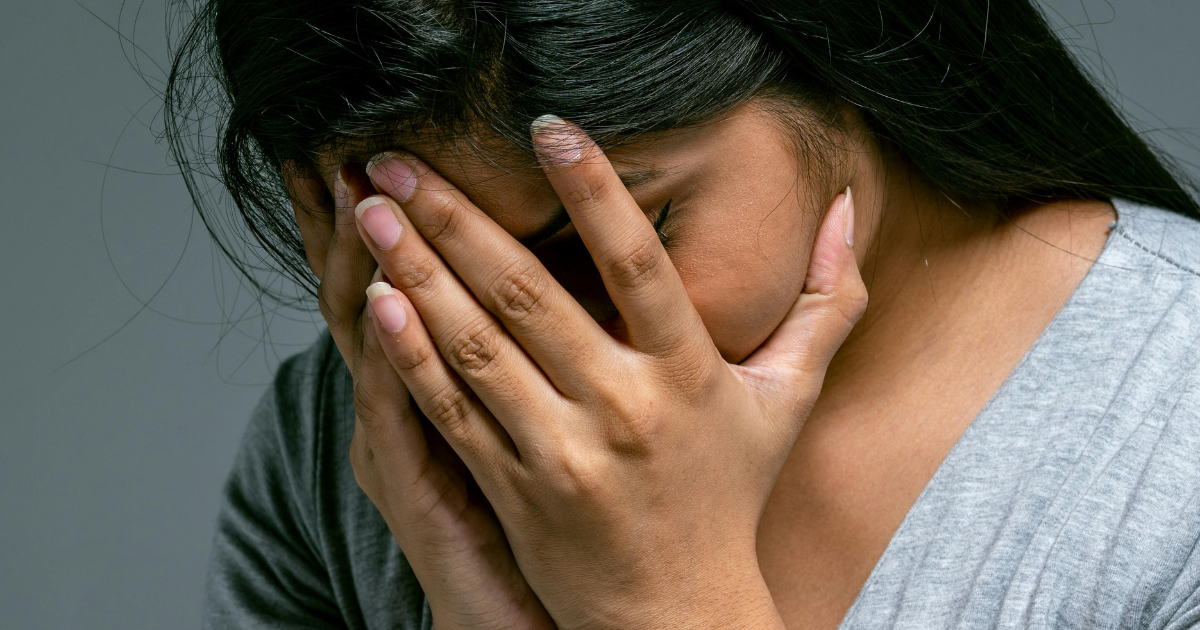Trauma produces profound changes in how someone thinks, feels, and maintains relationships with others, particularly during their teenage years. Most people are aware of Post-Traumatic Stress Disorder (PTSD), yet Complex PTSD exists as another serious trauma condition that receives less attention. It emerges from repeated traumatic experiences or prolonged exposure to abuse or violence, which mostly happens to adolescents or children.
Medical professionals recognize C-PTSD, although the DSM-5 does not officially recognize it, because these experts devise customized treatment strategies for patients with this condition. At the beginning of their developmental phase, young people need supportive care combined with sensitivity from their caregivers for emotional success.
In this blog, we will analyze its signs alongside its distinction from PTSD while providing available treatment pathways and resources for teens and families seeking assistance. We’ll also explore questions like “Do symptoms of complex PTSD come and go?” and common signs, such as its symptoms in men, helping you better understand this condition and how to seek help.
What Is Complex PTSD?
Complex PTSD stands as a mental health condition that manifests when someone survives prolonged or multiple traumatic situations. It develops only from ongoing trauma instead of single trauma events that trigger regular PTSD development. Childhood abuse, neglect, and exposure to dangerous situations over extended periods lead to its formation.
The two conditions differ from each other because of the distinctive traits between types of trauma and their duration. People with C-PTSD develop more profound mental health issues, mainly associated with self-perception and social connection.
The World Health Organization (WHO) includes it within its International Classification of Diseases (ICD-11), and thus, science now acknowledges this diagnosis globally.
Individuals with this condition, during their youth, develop self-value issues in addition to an elevation of anxiety levels when not exposed to threats. The implications of this trauma will continue throughout several years unless proper treatment measures are implemented. Its treatment exists, along with its potential to help young people recover while increasing their confidence until they achieve complete, healthy lives.
Is Complex PTSD Recognized in the DSM-5?
Medical professionals worldwide recognize Complex PTSD as an established psychiatric disorder without DSM-5 classification, but have added it into its official diagnostic categories. This diagnostic manual serves the United States as its primary mental health diagnosis tool. However, it receives clinical treatment through the PTSD diagnosis, with practitioners recording extra emotional and behavioral symptoms from prolonged trauma.
The World Health Organization (WHO) placed Complex PTSD in the International Classification of Diseases (ICD-11) to receive global diagnostic status. More specific treatment strategies emerged through this development because professionals gained a better understanding of the distinctions between the two conditions.

Common Symptoms of Complex PTSD in Teens
People with Complex PTSD demonstrate symptoms that extend past typical traumatic reactions in adolescents. These symptoms create changes that influence how teenagers feel and behave as well as their relationships with others, along with their self-identity. The diagnostic criteria for it extend beyond flashbacks and fear symptoms seen in PTSD because they add deep emotional challenges that manifest in daily activities. The following conditions represent usual indications for the identification of its symptoms:
- During trauma response, teens often direct their blame toward themselves while feeling like an internal flaw requires fixing.
- Pseudopsychotic symptoms, radical mood changes, and profound episodes of sadness may exist in young sufferers.
- Trust problems, along with fear of being abandoned, typically drive teens to separate from others or create disturbances within their social relationships.
- It commonly leads teens to believe they lack worth and have a hopeless outlook about life, with no right to experience either happiness or support.
- Among safe environments, they may experience persistent alertness because their startled state remains constant.
- During certain moments, teens dissociate or develop emotional detachment, which produces the sensation that they exist outside of their body.
C-PTSD Vs PTSD – Understanding the Key Differences
Understanding the difference between the two conditions is important when it comes to identifying the right treatment and support. Here’s a side-by-side comparison to make the distinctions clear:
| Feature | PTSD | Complex PTSD |
| Cause of Trauma | Single traumatic event | Multiple repeated traumatic events |
| Emotional Symptoms | Flashbacks, nightmares, fear | Deep shame, guilt, and chronic sadness |
| Relationship Impact | Avoidance of triggers | Intimacy, connection, and trust issues |
| Self-Perception | Often intact | Negative self-image, feelings of worthlessness |
| Duration of Symptoms | May reduce over time with treatment | Often long-lasting and complex |
| Recognition in DSM-5 | Yes | Not officially listed (recognized in ICD-11) |
Can Complex PTSD Symptoms Come and Go?
Complex PTSD symptoms show temporary changes in frequency, particularly when people experience stressful situations or encounter reminders of previous traumatic events. The symptoms of C-PTSD tend to disappear for a period before being inexplicably triggered by issues such as school conflicts, emotional stress, or traumatic memories. Detecting and properly diagnosing becomes extremely challenging because symptoms change their pattern without professional healthcare assistance.
The disappearance of symptoms may briefly happen before new waves of symptoms emerge later. The brain’s current state indicates its way of adapting to trauma, but does not indicate trauma disappearance. A successful approach requires dependable treatment along with supportive networks and healthy adaptation methods throughout its management period.

Exploring Complex PTSD Treatment Options for Teens
It is highly important to customize the treatment plans by combining two to three different types of therapeutic approaches with proper medication to get quick and effective results in recovery from complex PTSD in teenagers. The main treatment techniques include:
| Treatment Option | Description |
| Trauma-focused therapy | minimizes mental suffering and aids in the processing of traumatic memories in teenagers. |
| Cognitive Behavioral Therapy | focuses on creating coping mechanisms and altering unfavorable thought patterns. |
| EMDR | Guided eye movements are used to help process and reinterpret painful memories. |
| Medication | It may be prescribed to manage symptoms like anxiety, depression, or sleep issues. |
| Art or Music Therapy | Creative outlets help teens express emotions that are hard to verbalize. |
Recognizing PTSD Symptoms in Teen Boys and Young Men
Young males who experience symptoms tend to display them differently from how females present these symptoms. Male teenagers typically avoid revealing their emotions, so their particular behaviors could easily be mistaken for regular teen conduct. These are the main indications to identify:
- Sudden anger, irritability, or aggression with no clear cause.
- Youngsters who engage in dangerous and spontaneous choices, including physical combat, drug consumption, and resistance.
- Trouble sleeping or the constant occurrence of nightmares.
- A lack of personal interest accompanies their feeling of emotional numbness towards their former interests.
- Several physical symptoms arise alongside headaches, stomachaches, and persistent body tension.
Those people who show early symptoms and signs of trauma can get the required care and support.
Ready to Get Help? Contact My Teen Mental Health Today
Getting assistance marks the initial move toward recovery, whether it affects you personally or someone you care about. My Teen Mental Health completely understands how distressing it can be when individuals, particularly young people, need to handle trauma after experiencing emotional and physical abuse. The experts at our organization provide supportive guidance to direct patients toward treatments tailored for young adults with complex PTSD issues.
At My Teen Mental Health, we provide complete assistance ranging from therapy to educational resources and confidential support for any step of the journey. Contact us today to establish a brighter and more positive future.
FAQs
What are the main symptoms of complex PTSD in teenagers?
The following are the main symptoms:
- Emotional numbness
- Difficulty trusting others
- Flashbacks
- Low self-esteem
- Trouble managing intense emotions
- May also have abrupt mood swings or tantrums
- Avoid reminders of trauma.
How is C-PTSD different from regular PTSD?
People who go through a one-time traumatic event often develop PTSD, but repeated or long-term trauma can lead to a more complex form known as C-PTSD. This condition includes the typical symptoms of trauma response and adds deeper struggles like identity confusion, intense shame, and difficulties in forming or maintaining relationships.
Is complex PTSD listed in the DSM-5?
The DSM-5 lacks a separate Complex PTSD diagnosis despite allowing its symptoms to be recognized under additional criteria for PTSD. However, it maintains its status as a separate condition according to the ICD-11 under the recognition of the World Health Organization.
Can C-PTSD symptoms come and go over time?
Yes, C-PTSD symptoms can come and go, especially during times of stress, change, or reminders of past trauma. Symptoms may appear to improve and then return unexpectedly, which is why ongoing support and treatment are essential.
What are the best treatment options for teens with complex PTSD?
The best treatment options for teens facing this condition include different types of therapies such as CBT, EMDR, and family therapy. These therapies are integrated with various types of medication to control and minimize depression and anxiety. There are also different types of personalized treatment plans available for quick recovery.





